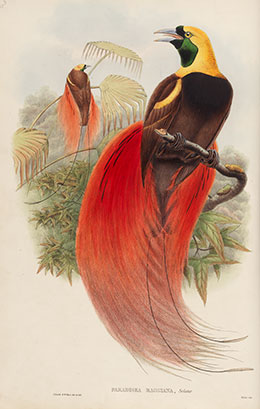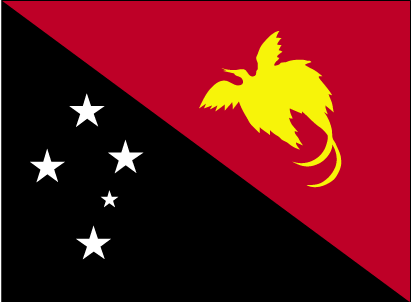Papua New Guinea (PNG): Forty Years of Independence
Displayed on the national flag is the Raggiana Bird of Paradise pictured left, Paradisaea (Latin for paradise) Raggiana, named for Marquis FM Raggi, an Italian naturalist and collector in New Guinea.
The Bird of Paradise has played a significant role in the cultural and social activities of many Papuan New Guineans, its feathers have often been used in ceremonies. On the flag it is shown soaring above the Southern Cross symbolizing Papua New Guinea's emergence into nationhood.
On 12 February 1971, a Papua New Guinea school girl Susan Karike, created a flag using colours most commonly used in traditional ceremonies, the lower section black with the stars of the Southern Cross in white, the top segment red with the stylised bird of paradise in gold.
Papua New Guinea is one of Australia’s closest neighbours and comprises the eastern part of the world's largest and highest tropical island, New Guinea together with many smaller islands. It has a long and un-policed land border with the Papua region of Indonesia to the west.
PNG’s abundance of remarkable natural and mineral wealth attracted 19th century explorers like Owen Stanley and naturalists like John Gould. In the 20th century, Australian adventurers like Cecil John Levien, Errol Flynn, Frank Hurley, the Leahy Brothers and artists such as Ellis Silas recorded their experiences of the landscape, animals and people of PNG.
Papua New Guinea was an Australian Territory until it achieved nationhood in 1975. Many Australians served in PNG as public servants, academics, broadcasters, missionaries, entrepreneurs and other roles—and many were born there. These close bonds with Papua New Guinea and its people remain to this day.

